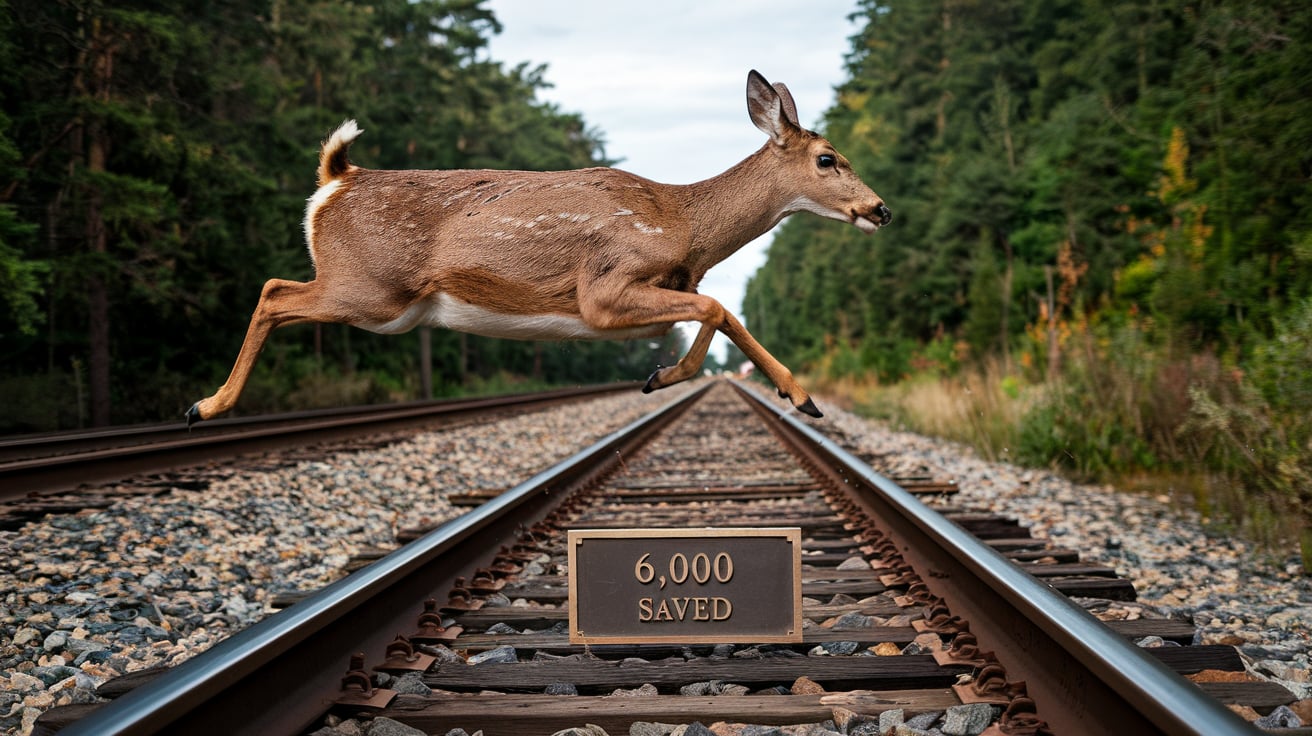
In a pioneering effort to enhance rail safety, U.K. railway operators have implemented an AI-enabled automatic deer detection and deterrent system (ADDS), successfully preventing nearly 6,000 deer from straying onto rail lines. The initiative marks a significant advancement in rail industry technology.
Network Rail, responsible for managing the majority of the U.K.’s railway infrastructure, collaborated with London North Eastern Railway’s innovation team and Innovation Factory to develop this groundbreaking system. The ADDS technology was trialed on a one-mile stretch of track between Stoke High Bridge and Stoke Tunnel near Peterborough, an area with frequent high-speed train activity.
The ADDS system features a sophisticated setup including 127 camera sensors, 90 audible alarms with ultrasonic emitters, flashing red and white lights, and 10 Wi-Fi routers along with portable power stations. The technology integrates intelligent acoustic and vision sensors to detect and classify deer approaching the tracks. Upon detection, the system activates audible and visual alarms to deter the deer from crossing.
The cameras continuously monitor the deer’s movements and behavior, capturing data to refine future system developments. The live-streamed footage is displayed on a real-time dashboard, allowing operators to track and document successful deterrence events with precise timestamps and locations.
Since its deployment, the ADDS system has effectively deterred nearly 6,000 deer from accessing the railway. The trial's success has prompted plans for a broader rollout of the technology.
Network Rail’s statistics highlight the severity of animal-related railway incidents, with 1,432 trespasses reported in the year ending March, averaging four per day. Deer were responsible for the highest number of rail incidents among animals last year, with 350 reported cases, followed by sheep, birds, cows, and swans. Notably, human trespass remains the most significant issue, with over 19,300 incidents recorded, occurring approximately every half hour.
Helen Hamlin, operations chief at Network Rail, emphasized the seriousness of railway trespassing: “Trespassing on the railway is a serious offense that causes delays to thousands of trains every year and can be very costly for people, causing death and life-changing injuries due to the railways' many hidden dangers.”
The ADDS system represents a significant technological leap in safeguarding railways and is expected to contribute to further advancements in preventing animal-related incidents on the tracks.